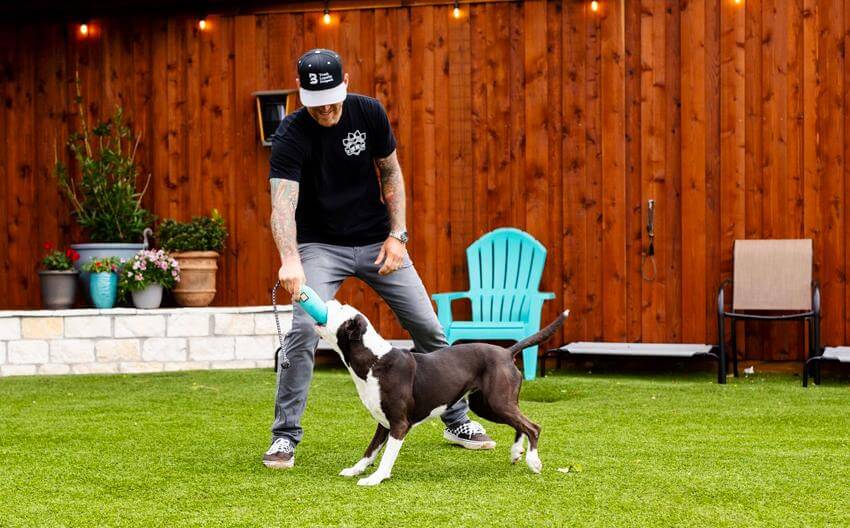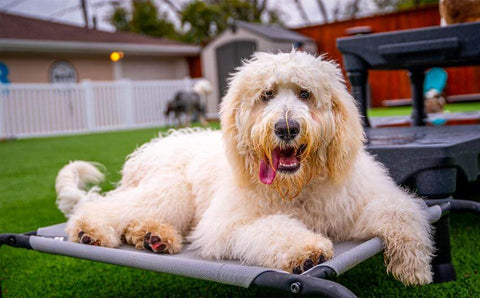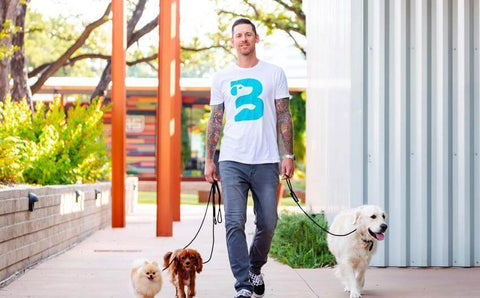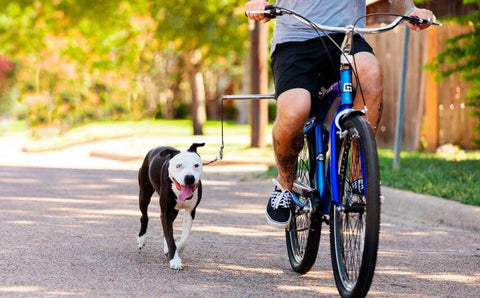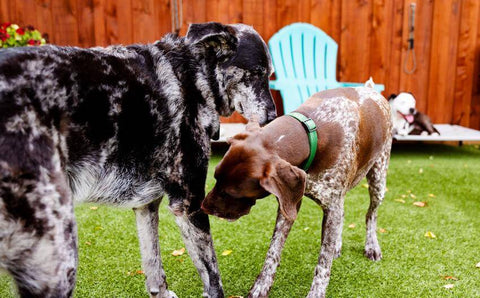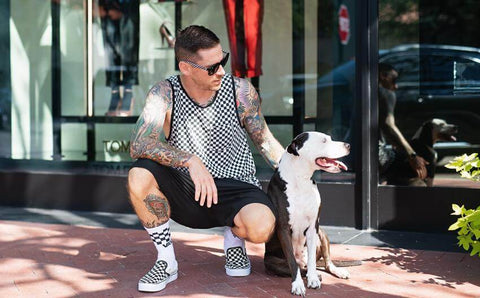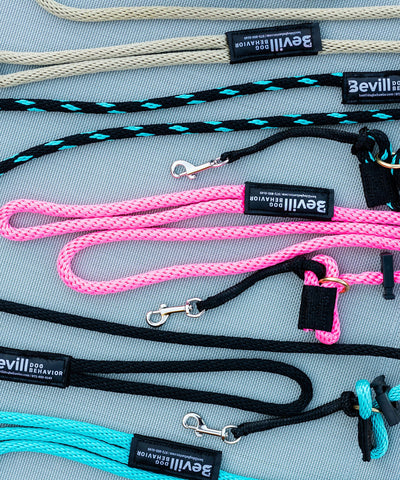Today we’re talking about the four states a dog goes through daily.
A day in the life of a human is hard to define, because all of us lead such different lives. There are some fundamental elements that are the same: rest, eat, work, play, etc..but beyond that baseline our lives are pretty different. Some of us stay home with the kids, some of us go to an office, some play rock music, some do yoga, some train dogs and so on. Dogs on the other hand, tend to do the same 4 things, no matter where they live or who their owners are. Whether living in the wild, or in an apartment in Uptown, a dog will do the same 4 things every day. We call these the Four States of Dog, they are:
- Follow
- Play
- Explore
- Rest
You’ll notice that first and foremost, dogs follow. In the dog world there is always a pack leader, and the rest of the dogs take a follower role. This is monumentally important in dog-behavior 101. In fact, we’ll go so far as to say that the majority of problems humans face with their dogs come from a lack of clarity between the follower/leader roles. If a dog has a calm, confident leader, it empowers them to be calm, relaxed followers.
With a proper leader a dog knows they are always safe and the anxieties of the world aren’t their issue. This is particularly important when we consider that dogs are living in the human world, which makes exactly zero sense to them. Dogs don’t understand traffic, or television, english or the difference between a toy and a shoe. It’s up to the human to guide them, and lead them, to keep them safe so they can fall into the calm follower state.
It’s important to note that there are no part-time roles in the dog world. A leader must always be a leader. If you sometimes let your dog run around the house with no rules, you shouldn’t be surprised when they don’t listen to you on a walk. You must be the calm confident leader all day long, so that your dogs can truly relax and trust that you know what you’re doing. The first state of dog sets the tone for the rest. If you are able to create the follow state, you will be able to guide your dog through the other states of dog effortlessly.
The second state of dog is play. Dogs are naturally playful creatures, it’s one of our favorite things about them. However, it’s important that we maintain the leader/follower relationship even through play. That means playtime needs structure. We can’t let our dogs run around the house chewing on everything they want, that’s not play, that’s chaos. Even seemingly harmless forms of play, can confuse the roles in the relationship. If you throw a ball, your dog runs to get it, then runs away from you- you’re not playing fetch. It might seem harmless here, but remember- there are no part-time roles in the dog world. If the dog makes the rules of play, then you are not the leader - and your dog will act out in some form or another down the line.
One thing we see often are dogs who freak out at other dogs during a walk. This is because the dog thinks they are the leader, and they need to protect themselves/the pack however they can. On the other hand, if your dog sees you as the calm, confident leader, another dog is no big deal. Playtime is a great time to practice this. Start by setting clearly defined rules for a fun, effective playtime. For example, you can play structured fetch. Here your dog stays put on the cot while you throw the ball, and doesn’t go retrieve it until you give the signal. Here you are fulfilling your dog’s need to play, while maintaining clarity about your role as the calm, confident leader.
The next state is explore. Explore doesn’t mean let our dogs wander off and do whatever they want. That would confuse the leader/follower dynamic and cause problems, not to mention it could potentially put our dogs in harm’s way. Remember, the human world is confusing for dogs. They don’t understand cities, or furniture. They don’t understand that exploring in the middle of the street, or chewing on a wire can be dangerous, so we must make sure to keep them safe, while fulfilling their need to explore. There are times/places where it’s appropriate to let your dog do some exploring (i.e. sniffing the ground, investigating new people and places) however, we must make sure they are in a calm, follower state of mind. The dog must look to us for permission to explore, so that we can control the environment, keep them safe, and bring them back to the follow state when it’s time. Never let your dog explore unattended, always be in control. That’s what a calm, confident leader does. This way your dog will be safe, happy and fulfilled in their explore state.
Finally, the fourth state of dog is rest. Dogs need plenty of it. Throughout the day your dog needs to rest in between following, playing and exploring. This means quiet time, in their crate or on a bed, without stimulation. A human might think sitting in front of the TV is resting, but at some level there is still stimulation. Dogs and humans alike need time for actual rest, away from distractions, where the mind can truly relax and reset. Proper rest can do wonders for your dog’s temperament. Make sure you’re giving them adequate time, in the appropriate environment to truly rest and recharge.
Your dog needs to go through all four states, every single day. This is the key to a fulfilled, happy dog. We want our clients to be able to guide their dog between the 4 states at will, and while that might seem like a big task, don’t worry. With practice, this will become second nature, and your relationship with your dog will thrive.
<< Previous Article: What Are Our Dogs Thinking?Next Article: What Is A Happy Dog? >>

